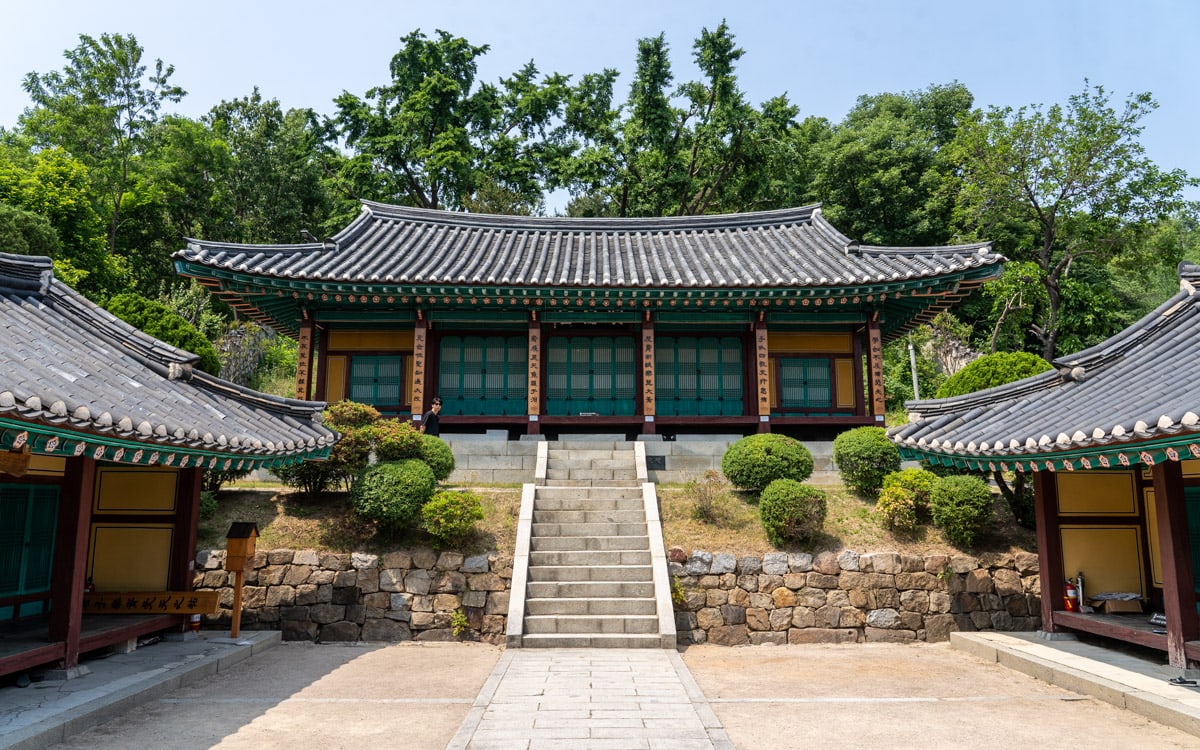
A hyanggyo was a government-run provincial school and Confucian temple that existed throughout Korea during the Goryeo Dynasty (918-1392) and Joseon Dynasty (1392-1910). Of the hundreds of these educational institutions built, Yangcheon Hyanggyo is the only hyanggyo remaining in Seoul.
During the Joseon Dynasty, Confucianism was the official state religion. And, it was at these hyanggyo were students learned about Confucianism and its rituals. Hyanggyo mainly served the children of the yangban, the ruling upper class of aristocrats, highly educated civil servants, and military officers.
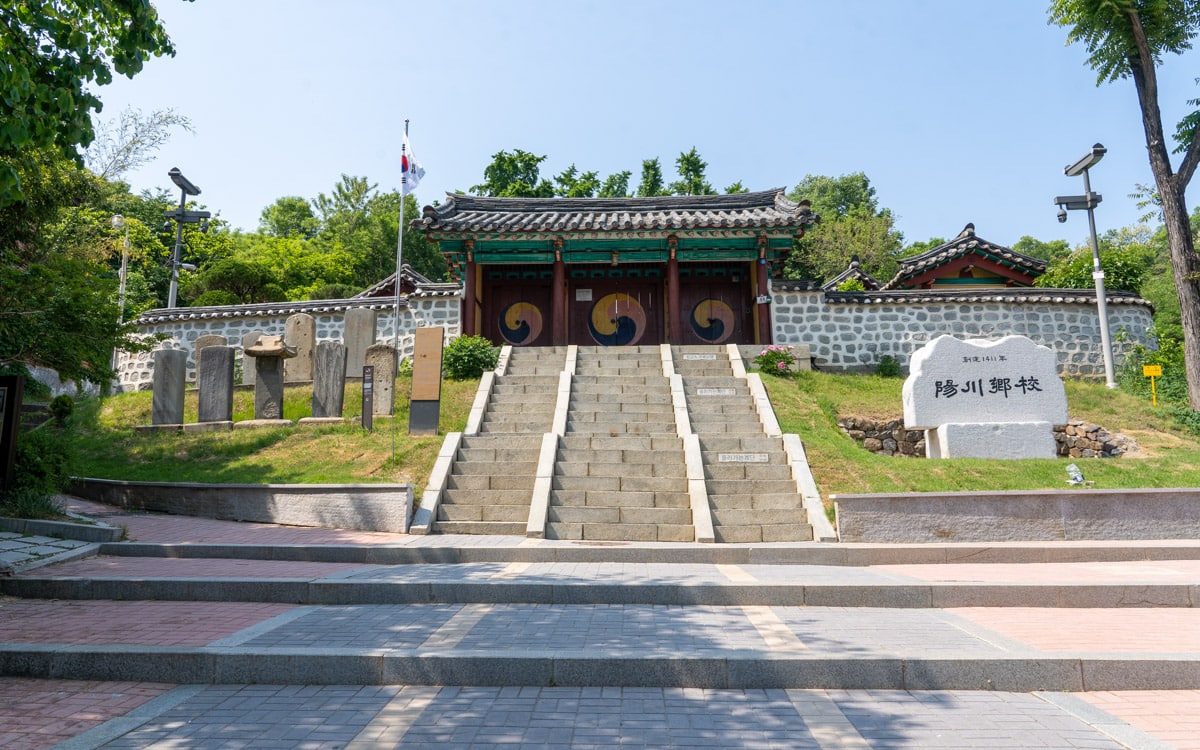
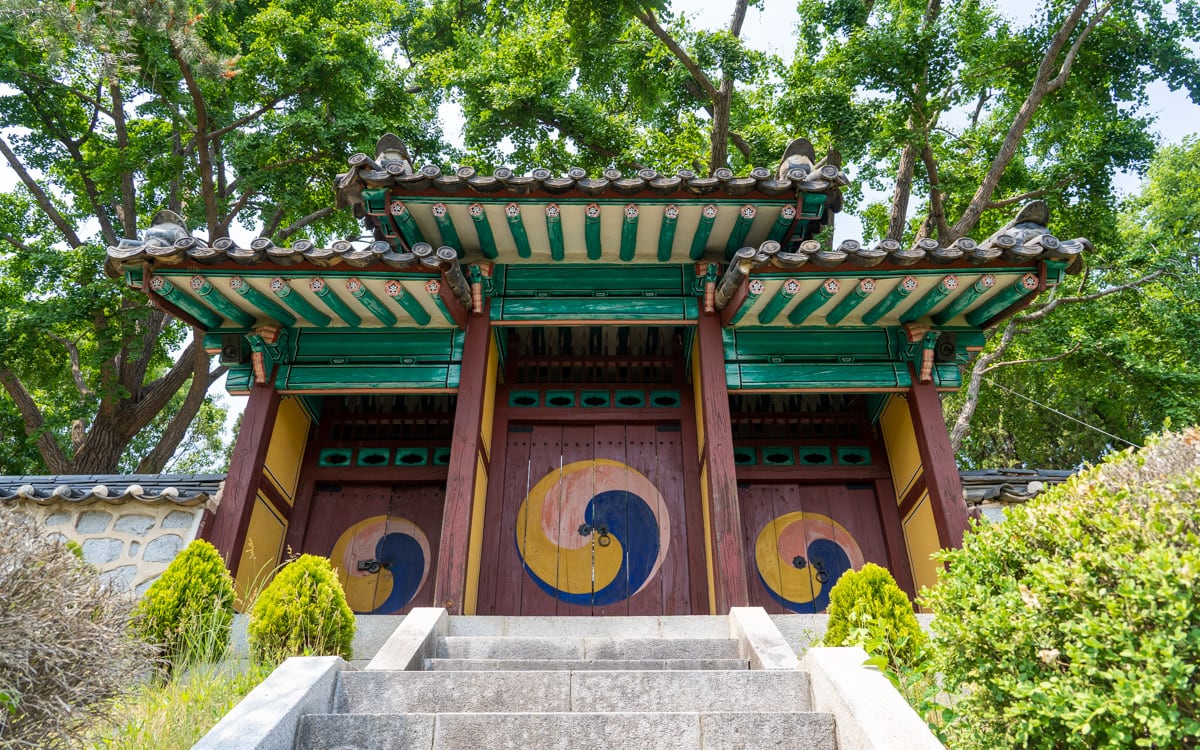
While hyanggyo did not meet widespread success during the Goryeo Dynasty and Joseon Dynasty, they could be found all across Korea. By the end of the Joseon Dynasty, most hyanggyo closed as they were unable to compete with private educational institutions. In the early 20th century, many closed hyanggyo reopened as public elementary schools.
While no longer used as an active school, many important ceremonies take place at Yangcheon Hyanggyo. Twice a month, a ritual ceremony known as Bongshim is held here. Another ceremony, known as Seokjeon Daeje, is held at hyanggyos across Korea and at Seoul Munmyo. Seokjeon Daeje, which takes place in February and August, honors Confucius. This elaborate ceremony involves sacrificial offerings such as food and alcohol. During the ceremony, dances (munmyo ilmu) and musical performances (munmyo jeryeak) take place. Today, Seokjeon Daeje is part of Korea’s Intangible Cultural Heritage list. In addition to festivals, various programs allow visitors to learn about Confucianism along with Chinese characters, calligraphy, and traditional Korean food.
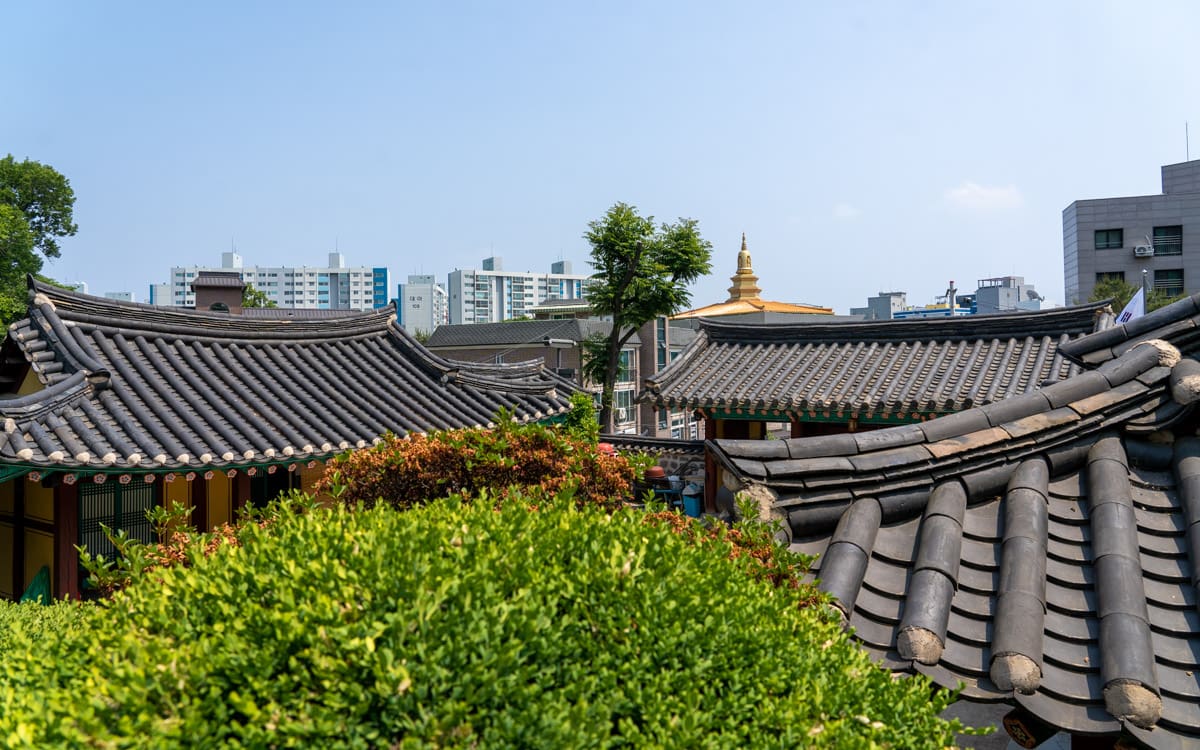
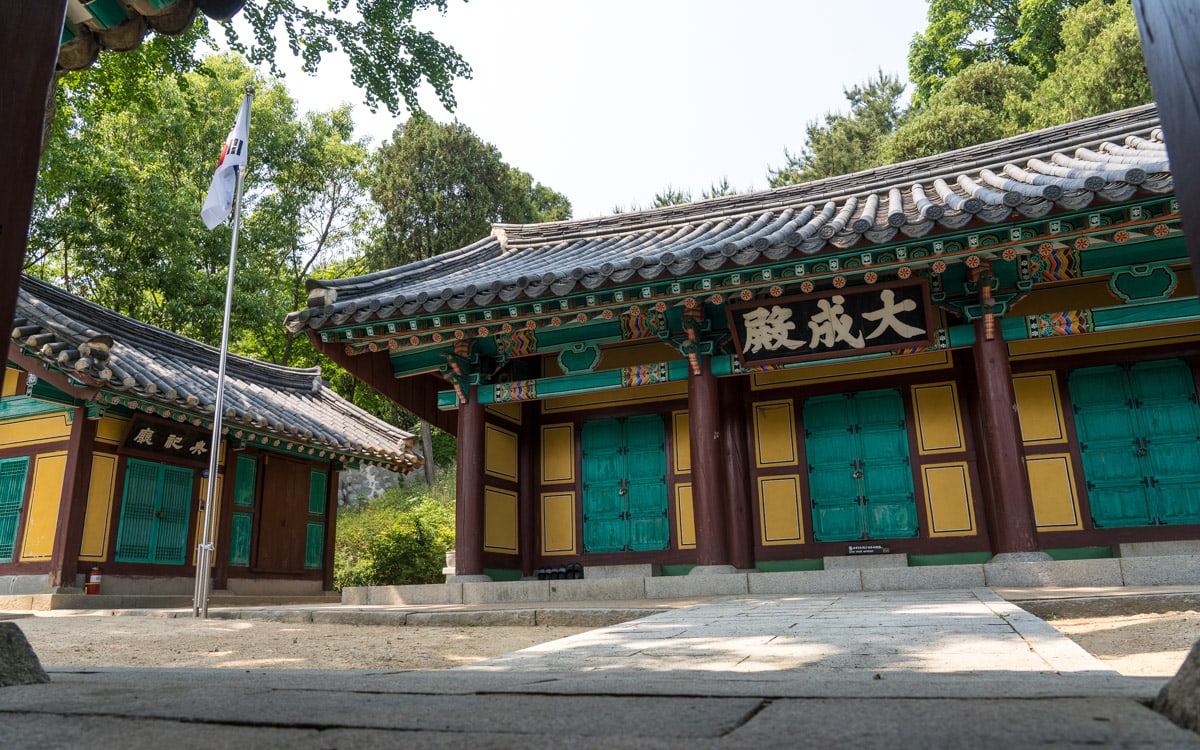
Yangcheon Hyanggyo was founded in 1411 during the 11th year of the rule of King Taejeong. Taejeong, who was the 3rd king of the Joseon Dynasty and the father of King Sejong the Great, ruled from 1400 to 1418. Today, there are a total of seven buildings and a main gate found at Yangcheon Hyanggyo. They are Daeseongjeon, Jeonsachung, Naesammun, Myeongnyundang, Waesammun, Dongjae, Seojae, and Hongsalmun. Daeseongjeon Hall, located on a hill at the rear of the grounds, is the main shrine hall. Myeongnyundang Hall, which was used as a lecture hall, is located at the front of the grounds. In front of the entrance are the nine stone tablets commemorating government officials.


In 1981, Yangcheon Hyanggyo underwent repairs and a full restoration. More repairs were done in 1986 and 1994. Another renovation project occurred between 2007 and 2008.
On June 18, 1990, Yangcheon Hyanggyo was designated as Seoul Cultural Heritage Monument No. 8 by the Seoul Metropolitan Government. On March 5, 2009, the site was designated as Cultural Property No. 44.
Yangcheon Hyanggyo Information
Hours
Tuesday: 10:00 AM – 4:00 PM
Wednesday: 10:00 AM – 4:00 AM
Thursday: 10:00 AM – 4:00 AM
Friday: 10:00 AM – 4:00 AM
Saturday: 10:00 AM – 4:00 PM
Sunday: 10:00 AM – 4:00 PM
Admission
Free
Address
53 Yangcheon-ro 47na-gil, Gangseo-gu, Seoul, South Korea
Map
Additional Resources
Klook
Klook offers discounted tickets and reservations for attractions and services in Seoul—from theme parks and museums to tours and transportation.
Viator by TripAdvisor
Book tours, activities, and unique experiences in Seoul—from sightseeing to cultural events and outdoor adventures—offered by local providers.
Rakuten
Save with cashback on hotels and travel services. Sign up and you could earn $30 cashback on your first purchase over $30.
Book Recommendations
Prefer a physical guide? Fodor’s Seoul offers detailed recommendations, maps, and travel tips for the city.
Last Updated on Jul 15, 2022